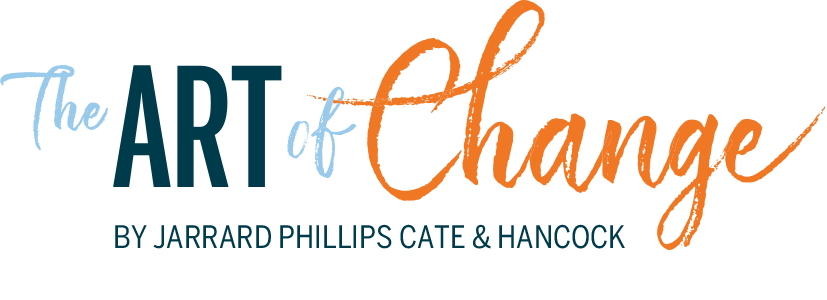
Recapping the Elements of Change
What is the Art of Change? If you’re new to our leadership philosophy and this eponymous publication, or if you just need a refresher, here are a few key principles from last year’s inaugural season of content.
To drive and sustain change, we must change people.
To get ahead of the game, whether for personal health or as part of a healthcare system, people must understand how change affects the future. Something as simple as explaining that taking an hour now to learn a new EHR could save a half hour each day for the rest of your practice’s life – simply reframing the investment – can help create buy-in for real change. Healthcare workers are much more likely to change when doing so helps them connect with a larger purpose or bigger story.
Change requires an emotional appeal, a strong vision.
Leaders must inspire, redefine and challenge. They must create a new vision for healthcare, one that captures people’s hearts – not just informs their minds – and stirs within them a desire to change, evolve and create a better system.

Turney
A vision can be – but doesn’t have to be – dramatic. It is simply a framework for how the corner of the world you can affect should look. It should be personal. It should be challenging for the resources you have, but not impossible. A vision, according to Dr. Susan Turney, CEO of Wisconsin-based Marshfield Clinic Health System, “is thinking about and planning the future using one’s wisdom and imagination and creating an opportunity for growth.”
Note that “creating a vision” cannot be a whitewash for dealing with hard truths. Painting a rosy picture won’t make people forget they’re dealing with a mess. Leaders must be careful to avoid distorting reality and thereby damaging trust. Instead, they should connect measurable outcomes with a vision to add credibility and keep the organization on track.
Create emotional appeal through stories.
Successful leaders know the value of distilling complex messages into stories to promote buy-in and create further collaboration. Big ideas need to be packaged in a way relatable to anyone. People must see themselves in a story, because, to the point above, stories create an emotional connection. And, what is the best way to build a story people can connect with and act on? Ask them what they think. Listen to their needs and perspectives, connect those personal responses to the big picture of where your organization is headed.
Authenticity builds trust and buy-in.

Drane
“It’s isolating when you pretend everything is awesome,” said Alexandra Drane, CEO and co-Founder of Rebel Health and ARCHANGELS. “You rob people of the chance to support you and to feel better themselves. The more supposedly powerful we become, the more we forget that.” The result can be a loss of trust and skepticism in the vision. In contrast, authenticity leads to impact because it creates an environment of shared interest, shared belief and collective vision.
Seek feedback, but don’t pass the buck.
When change – or stability, for that matter – is needed, leaders should listen to how people think it affects them and not just explain how it should affect them. There’s a big difference between listening to understand and listening to prove you’re right. If people know why they’re being asked a question and how their response will be used, they’ll likely have more trust in those asking and offer more direct feedback. Feedback that can be used to refine and improve the original idea.
Listening also reveals bogeymen – negative stories or perceptions that may or may not be true. People naturally develop opinions and are constantly creating narratives. Leaders can only get to the root of those narratives – and dispel the false ones and fix the accurate ones – if they listen attentively.
Still, a hospital CEO is paid to make the hard calls and own the decisions. At some point, that means shutting down the listening tour and getting to work. The goal should be to gather the input needed from key stakeholders to either confirm or reject the idea. Listening is useful up to the point when you’ve gathered all the data that you need. But, if your goal is to satisfy people, if you’re listening in the hopes that everyone will eventually say the same thing, you’re always going to be disappointed.
